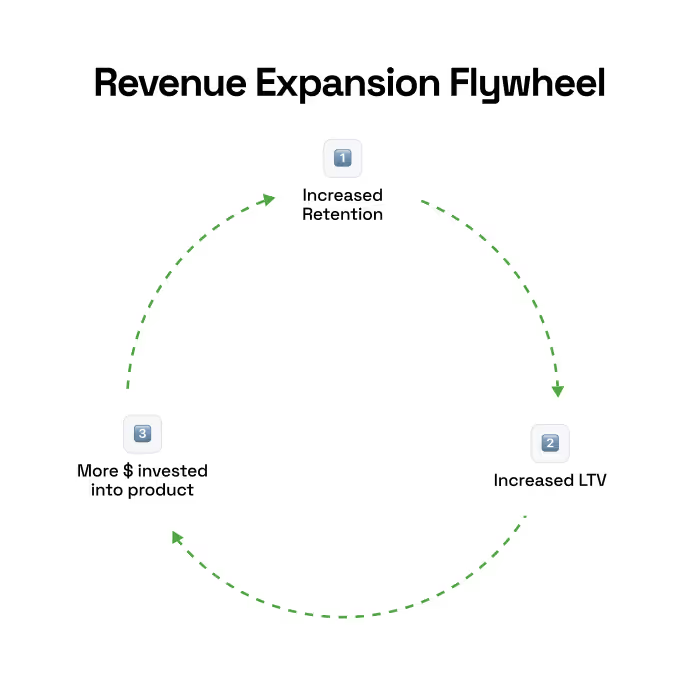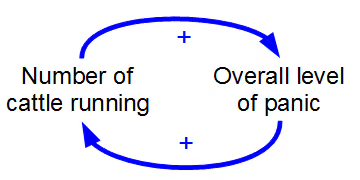
Conversation

🥳 Feedback Received!
Thanks for taking a moment to share your thoughts — it genuinely helps us make each chapter sharper.
What happens next:
- Your feedback goes straight to our product team.
- We’ll use it to refine lessons, clarify examples, and make the program even more useful.
Appreciate you helping make this program better for everyone.
Ready for your next challenge? 👇
B2C motion-level flywheels
When your three motions work in harmony, they don’t just produce results — they compound.
Remind you of anything? The flywheel dynamic that powers the most sought-after Growth Catalysts also exists at the motion-level.
Each motion feeds the others, and with every turn of the wheel, the entire system spins faster and becomes increasingly difficult to stop.
And three core flywheels power our engine.
1. New Customer Flywheel (Acquisition + Monetization)
While there are multiple types of acquisition motions, at the highest level, every new customer flywheel has the same shape:

Fuel → New user acquired → User converted to revenue → Revenue reinvested as more fuel
This is the universal engine behind net-new growth. Monetization is essential here. Without capturing revenue, there’s nothing to reinvest.
2. Engagement Flywheel (Retention)

User engages → Receives value → Engagement deepens → Receives even more value
Every extra cycle makes the product stickier.
3. Revenue Expansion Flywheel (Retention + Monetization)

User retained → More revenue → Revenue reinvested (acquisition + product) → More retention
This is the compounding engine that powers long-term durability.
Monetization’s Role
Notice that monetization isn’t a separate flywheel. It’s the bridge. It’s what converts value into fuel, then channels that fuel back into acquisition or retention, depending on where leverage is greatest.
Quick Reality Check on Flywheels
A flywheel isn’t something you “decide” to have. It’s an outcome. It either exists or it doesn’t.
That outcome is a positive feedback loop. There’s a bunch of other technical jargon we could get into, but I just Googled “positive feedback loop” and don’t think I could put it more simply (or vividly, for that matter) than this image from Wikipedia:

Stampede flywheels aside, here’s a more textbook definition:
Conditions for a powerful flywheel:
- Positive feedback loop: Each cycle produces more output than input, so the system accelerates instead of flatlining.
- High velocity/throughput: The shorter the time between input and output, the faster the loop compounds.
- Low leakage: Outputs can actually be reinvested back into the system. If most “fuel” leaks out (e.g. poor retention, inefficient monetization capture), the flywheel stalls.
- High ceiling for scalability: A flywheel needs room to keep spinning and compounding. This is why paid and virality flywheels require huge markets. Otherwise, they plateau or burn out completely.
Every acquisition motion type has the potential to create a flywheel effect. But simply running ads, writing content, or building viral flows doesn’t mean you’ve unlocked one.
If you invest $1 into ads and get $1 back… no dice.
However, if you can invest $1 and return $4, which can be reinvested to produce $12. Now that’s a flywheel.
So, how do we give ourselves the best chance at cracking a flywheel? That’s where motion alignment comes in.


